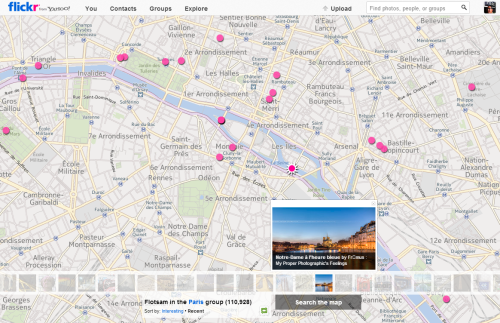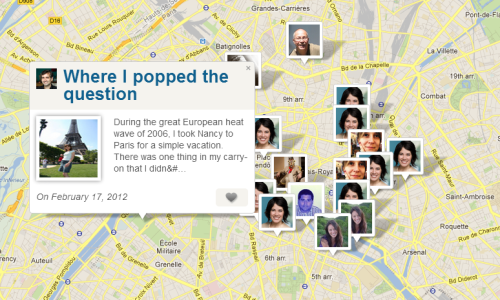
A lot has been written about how Google Glass will be great for those that put on a pair. Immediate access to the world’s most powerful database, push alerts from your closest friends, a voice UI so you can look up directions without having to look down at your phone, a camera that lets you take a photo and share a moment, all without leaving that moment.
While these are all powerful use cases that are bound to transform how we interact with the world around us, I’m more excited for the capability of Google Glass to annotate the physical world as we travel through it for those that come after us, especially those that can re-experience that world, as we saw it, in context. Imagine being able to take a photo of Notre Dame in Paris today, on a trip with your family and saving those photos with all the GPS data so the photo has a place, on a map, in time. Add a community and you have a series of photos of a place, all taken from different perspectives. This, of course, is flickr’s world map – announced in 2004 under the tagline, “eyes of the world.”

While a picture is worth 1,000 words, what if you could add more context. What if you could add more text to your photo? Tell a story that shared how this photo, in this place, was important to you? This is Findery.com, a place where people leave notes for each other in space and time. As described in their FAQ,
Findery is made of notes. A note can be a story, advice, jokes, diatribes, information, memories, facts, advertisements, love letters, grocery lists and manifestos. The content of a note is only limited by your imagination. A note can be shared with the world, one to many people, one to one, or only with yourself.

Findery and the Flickr Map are compelling maps experiences but imagine how powerful they could be if you could experience them in situ. The mobile versions of Flickr and Google+ get at this with a Nearby feature. This sort allows you to browse photos that are nearby to your GPS location. I’ve used it a few times but rarely is it compelling. Even if the photos are only a block away, they lose their connective tissue.
While Google Glass is interesting as an information capture device, the possibility of a viewing device that can potentially line up photos that are taken at the same place is something that really excites me. Once you have a head’s up display connected to a vast library of GPS-tagged photos you can enable clever overlays that show you not only the space around you but also that same space through time.
Check out OldSF – it’s a completely voluntary effort where two folks came together and took the time to put a bunch of photos from the San Francisco Public Library on to a map so you can browse through them. One of the founders of OldSF blogged about the thrill of overlaying one photos from the past and fading to the present (and back again) where you can basically time travel in real life. It’s a genre called, Now and Then photography most recently cataloged in the site, Dear Photograph
Imagine being able to pull up photos from your past, your father’s past, or your grandparent’s past. Ask Google Glass for directions to the nearest pinned memory and then bring it up in your glasses and be able to see that moment, captured in time, while standing on the very spot the photographer stood. Add voice annotation, capture some audio. It’s that moment that puts goosebumps on my arms. It’s that moment, reliving history, your personal history, that makes me excited to try out Google Glass someday.

Leave a comment